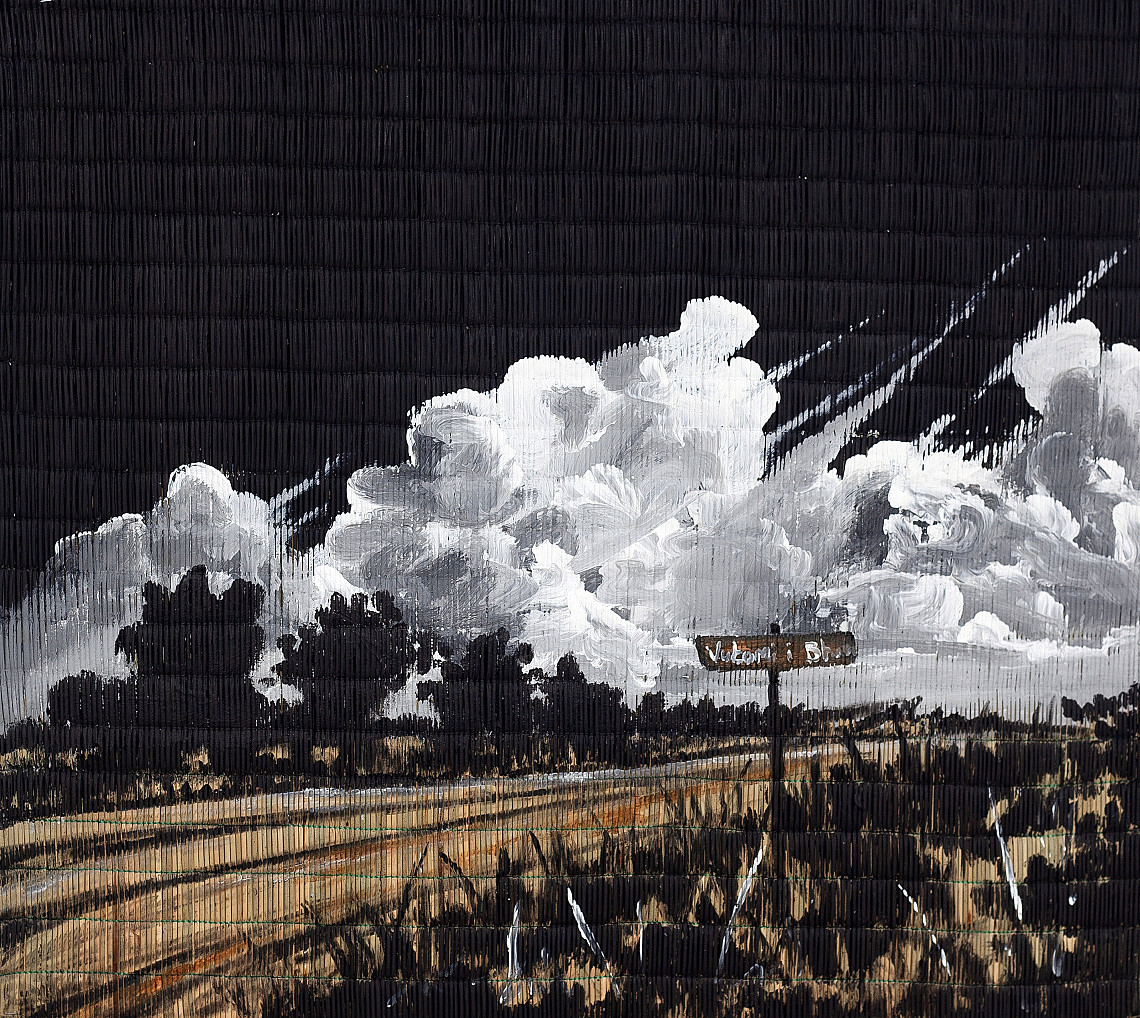
April 26, 2025 - May 28, 2025
274 Preller Street, Muckleneuk
Storytelling is an integral part of human existence, whether in text, oral narration, or through the use of images as iconographic signifiers. The exhibition Tsalwa: The materiality of stories delves into the practice of Fumani Maluleke as a visual narrator where Maluleke ruminates on his encounters around the premise of land and home. The term ‘Tsalwa’ refers to Maluleke’s engagement with the straw mat as a metaphorical scroll that he employs as a canvas to portray the natural scenery of his homelands and the habitual manner of being of the people from Tsomo, a village in Limpopo.
Through his novel practice of painting scenes on a grass mat as a form of storytelling, Maluleke attempts to advance our comprehension of the handcrafted mat from that of a utilitarian object to a valuable signifier of heritage and home. The straw mat, known as ‘Xitheve’ in Xitsonga, is known around South Africa, bearing different names such as ‘Legogo’, ‘Icanci’, and ‘Moseme’, amongst other names from different dialects in varied spatial locations in South Africa and other countries on the continent such as Lesotho, Swaziland, and Malawi. In the exhibition Tsalwa: The materiality of stories, we encounter Maluleke’s renditions and memories of home painted on the straw mat, Xitheve, firstly as an iconographical account of life in Tsomo and secondly as a recontextualization of the straw mat into a scroll that holds the knowledge of a people and their simple yet distinct way of being.
Created on handcrafted mats, Fumani depicts rural patronal landscapes detailing picturesque hills, infinite tar roads, children playing, and elaborately dressed women going about their everyday tasks, We are privy to scenes of women fetching straws from the field, women processing grains, and afternoon walks on a sunny day. The grass mat acts as a fitting scroll for the information Maluleke inscribes on it as it holds the story of the land, the rain patterns of the season, the intensity of the sun’s heat, and the fertility of the soil it grew from. The selected artworks not only act as visual representations of communal life but also inspire a sense of cultural renaissance centred around our own stories of belonging, our narratives and memories of home, and further remind us of the pivotal lessons and stories that we have forgotten.
The artworks further comment on colonialism and capitalism’s grasp on South Africa; they further give us a glimpse into notions around labour migration in the country and its effect on the land and the black family structure, of the relationship between land and life, consumption, communication, and conservation of our natural resources and pastoral lands. Tsalwa: The materiality of stories serves as a visual anecdote of communal habitual behavior, beliefs, values, and an overall approach to life that is rooted in simplicity; it is a narration of a people’s relationship with the land they inhabit, one that mutually beneficial, where they take care of the land and the land in turn supplies them with what they need. The exhibition stands as an encouragement for us to revisit indigenous knowledge systems of creation, production, and being.
VIEW THE EXHIBITION VIRTUALLY (Click to view)
LINKS